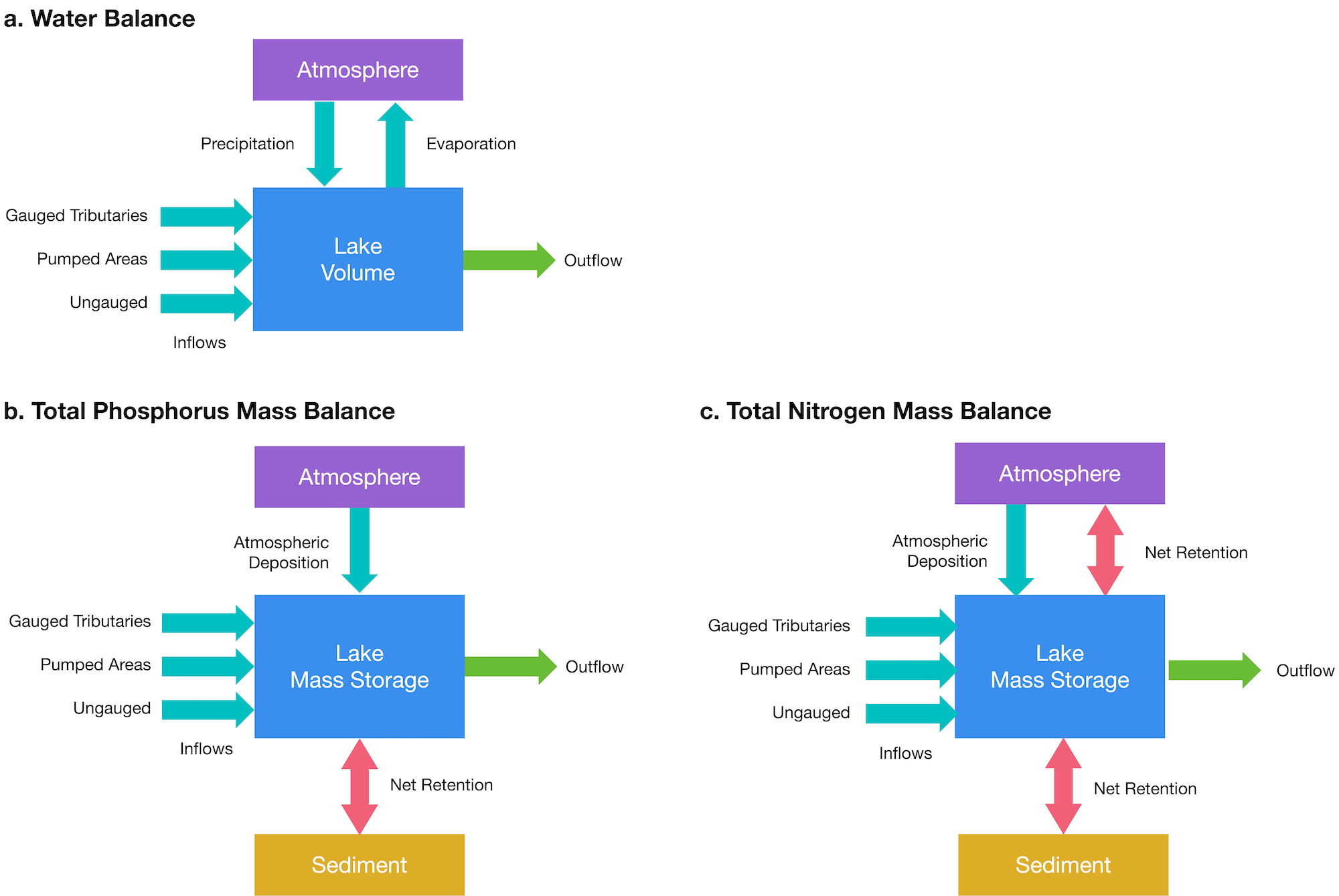Methodology
The overall water and nutrient mass balances of Upper Klamath Lake are represented by a continuous dataset of monthly flows, nutrient loads, and flow-weighted mean (FWM) concentrations for total phosphorus (TP) and total nitrogen (TN). The balances computed from a variety of data sources (nutrient concentrations, flows, water levels, precipitation, evaporation) for each individual mass balances term including gauged tributaries, pumped agricultural areas, lake storage, and outflow.

For the water balance, each term was either directly measured or independently estimated except for inflows from ungauged drainage areas, which were calculated by difference from the following water balance equation, and net retention, which represents errors associated with constraining the ungauged inflows to non-negative values:
Δ Lake Volume = Precipitation + Gauged Tributary Inflows + Pumped Inflows + Ungauged Inflows – Evaporation – Outflow + Net Release/Retention
Similarly, for the nutrient balances, the TP and TN loads (i.e., mass per unit time) of each term were generated based on direct measurements or independent estimates except for net retention, which was calculated by difference from the following mass balance equation. Concentrations of each term were then computed by dividing the loads by associated flow volumes.
Δ Lake Storage = Atmospheric Deposition + Gauged Tributary Loads + Pumped Loads + Ungauged Loads – Outflow Load + Net Release/Retention
For the nutrient balances, net retention represents the net loss (or gain) between the water column and sediment (as well as the atmosphere for N only). For P, positive values denote a net settling (i.e., loss) from the water column to the sediment and negative values denote a net recycling (i.e., gain) from the sediment to the water column. For N, net retention incorporates exchange with not only the sediment but also the atmosphere through nitrogen fixation and, to a lesser extent, denitrification. Positive values of N net retention denote an overall net loss of N from the water column to both the sediment and atmosphere, while negative values indicate a net gain.
The water and nutrient mass balances terms were computed at monthly timesteps and then aggregated to seasonal and annual intervals over the full period of record beginning in WY 1992. Together, these datasets provide a baseline for evaluating the overall dynamics and long-term trends in flows, nutrients loads, and FWM concentrations for each mass balance term.
More details on the methodology can be found in the most recent mass balance report (Walker and Kann, 2022), which is available in the Reports section.